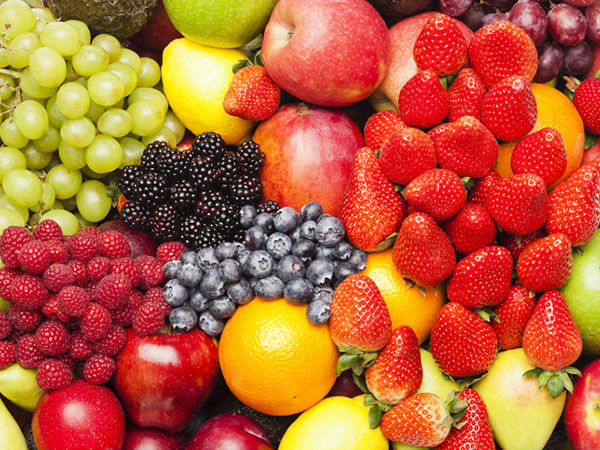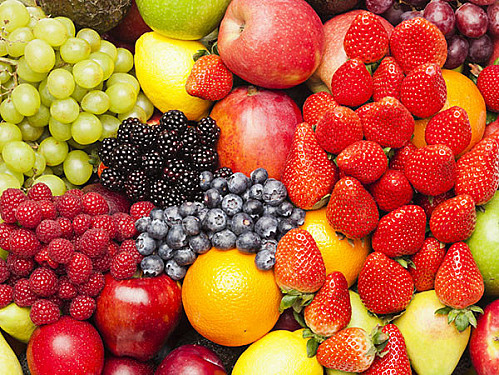
In the United States, there are plenty of dazzling fruits that fill grocery stores all year round. They are offered in all sizes, shapes and colors, and we have all heard about 5 servings of fruits and vegetables recommended for the day. So what are we eating them for? And how does nutritional value vary between fruits? Is there a difference between whole fruit and juice, fresh and dried? Let’s take a look.
Differences in fruits
Like other foods, different fruits have different nutritional values. In general, whole fruit is a good source of fiber, but fruit juice is not. And one cup of fruit juice, even 100% fruit juice, contains much more sugar than one or a whole cup of fruit. In addition, the whole fruit is more satisfying than juice. If you meet the recommended fruit and vegetable intake, it is better to eat (whole) than to drink (juice). However, for 100% juice, you should not avoid drinking the juice altogether, but you should limit your consumption to 4-8 ounces or less per day.
The freezer section of a grocery store often has a large selection of frozen fruits. These are often already peeled and cut (like mangoes), which is convenient and often cheaper than fresh fruit. Nutrients are well preserved because frozen fruits are usually picked near harvest time and snap frozen. In addition, seasonal fruits such as blueberries are readily available in frozen form. The key to your choice is to choose plain frozen fruit without the addition of sugar.
There are many fruits available in dry form, such as raisins, apricots and pineapples. It is also popular with hikers and campers because it is nutritious, can be stored for long periods of time, is convenient to carry and has high calories. However, sugar is often added during the drying process, especially for mangoes and pineapples. Dried cranberries are naturally very sour, so most of the time sugar is added. Even if you don’t add sugar, you can easily eat a lot of compact volume and sweetness at once, and the calories will increase in a blink of an eye.
Some dried fruits, such as raisins and apricots, are also treated with sulfur dioxide to preserve their freshness and color. For most people, that’s not a problem. However, some people, especially those with asthma, are sensitive. Sulfur dioxide treatment is indicated on the packaging, so it is not difficult to avoid it if necessary.
How about buying organic?
There are many options for organically grown and traditionally grown fruits, such as fresh, frozen and dried fruits. Consumers may choose between them based on their agricultural practices and environmental impact, but nutritionally, there is not enough difference to choose between them. Although there are restrictions on the use of pesticides in the United States, it is always advisable to wash the fruits thoroughly before eating, as some fruits tend to have more pesticide residues than others.
Difference in nutritional value
Different fruits are a good source of different nutrients. Citrus fruits are rich in vitamin C, and other fruits are also good sources of nutrients. Some examples below:
|
Nutrients |
Main functions |
Source of good fruit |
|
potassium |
Balance of water and electrolytes, maintenance of healthy blood pressure |
Orange, raspberry, banana, cherry, pomegranate, honeydew melon, avocado |
|
iron |
Red blood cell formation, child’s brain growth |
Dry apricots, raisins |
|
Vitamin C |
Maintaining a healthy immune system, wound healing, antioxidants |
Citrus fruits, strawberries, kiwi |
|
Folic acid |
DNA synthesis, erythropoiesis, early development of the fetal neural tube |
Orange, mango, avocado |
|
Vitamin A |
Dark vision, cell proliferation, immune function |
cantaloupe |
In addition to the nutrients listed above, certain fruits are also high in flavonoids. It is a diverse group of compounds, some of which are powerful antioxidants that protect against oxidative damage and may reduce the risk of certain diseases such as cardiovascular disease and diabetes. In particular, citrus fruits are high in the flavonoid flavanone class, and blackberries, blueberries, cranberries and cherries are high in the flavonoid anthocyanidin class.
So what kind of fruit should we eat?
As you can see, there is more than one fruit that contains all the nutrients, so eating a variety of foods is the key to good health. I will try something new! Most adults need to eat about two glasses of different colors a day. Prioritize whole fruit over juice. It will be cheaper, so let’s eat seasonal food. And enjoy the fruits. Eat carefully to fully understand the aroma, texture and flavor. Bonapetti!!
As a service to our readers, Harvard Health Publishing provides access to a library of archived content. Please note the date of the last review or update of all articles. The content on this site may not be used as a substitute for direct medical advice from a doctor or other qualified clinician, regardless of date.
..
